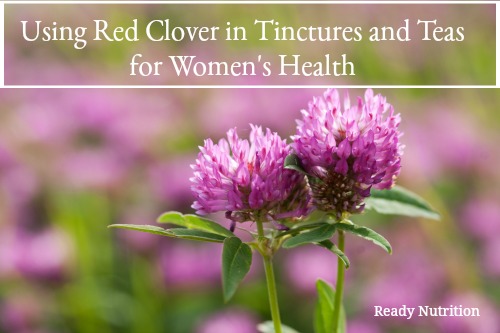
Red Clover to Naturally Help Women’s Needs
Ladies, this drug is important primarily for you. The Isoflavones in Red Clover have a wide variety of effects that you need to consider. In women suffering from menopause, studies have shown that these isoflavones from Red Clover improve arterial functions termed arterial compliance. Isoflavones also have a protective effect on the lumbar spine of women.
Another component of the flower is Biochanin A, and this is a compound that is found within Red Clover extract that has a chemoprotective effect and inhibits carcinogen formation in cells. Carcinogens are cancer-causing substances. It also has estrogenic effects. The extract decreased bone mineral density loss and losses in the mineral content in the lumbar spine for women who undertook a 12-month treatment.
Women who took Red Clover extract who suffered from hot flashes in post menopause had those flashes reduced by 44%. This was determined after a 12-week study. In addition, Red Clover can also be used for respiratory conditions and coughs, particularly pertussis, also known as whooping cough.
The extract comes usually as pills, capsules, or a liquid extract, the latter being the most commonly found form. The reason it is a summer-dependent drug is that after the summer ends, Red Clover should not be harvested, as it becomes toxic around late August to early September, depending on your geographic locale of residence. Contraindications include if you are using anticoagulants (that prevent blood clotting), contraceptives, estrogen/progesterone therapy (due to the potential for potentiation, or an increase in the effects of the already prescribed drugs), and Tamoxifen (Tamiflu), as it will decrease the effectiveness.
How to Use Red Clover
It can also be prepared at home as a tincture in a 1:1 liquid extract utilizing 25% ethanol (also known as grain alcohol).
For Red Clover Tincture:
- Pick blossoms in the early morning.
- Wash and place blossoms into a jar and pour alcohol over the blossoms, ensuring all are covered.
- Seal your jar and place your clover tincture in a dark cabinet.
- Store tincture in dark place and allow to sit for 6 weeks and shake 2 times a day.
The daily dosage is 4 grams of the extract, usually taken as an infusion (a tea) in three divided dosages. Sometimes those using Red Clover will have an allergic reaction to it. Consult with your family doctor prior to utilizing it as described within this article.
Red Clover Tea:
- Add the dry red clover flowers into the hot water and allow to steep for 15 minutes.
- Drink 3 times a day.
When harvesting it on your own for a tincture, remember to leave a good amount of the plants intact in order that they may reproduce more for the next season. A good rule of thumb is to leave 30% to grow in nature. When you wildcraft your herbs, it is best to place them (the flower heads in this case) in paper bags, so as not to have any leeching from plastic sandwich/Ziploc bags. This will help to wilt the flowers to release their curative properties. In this case, sandwich bags used to “brown bag” lunches for school (do they even do that anymore?) are more than adequate.
So, ladies, try to incorporate Red Clover into your supplies for those conditions outlined. Some things are just made with women in mind, and it appears that the Red Clover was designed in such a way. We’d love to hear your thoughts, comments, and experiences with this herb. Keep fighting that good fight! JJ out!
Please note that red clover is not recommended for use by pregnant women, or those struggling with estrogen dominance conditions. As well, those with breast or ovarian cancer and liver problems should not use this herb. Not for use with contraceptive pills or for those on blood thinners.
